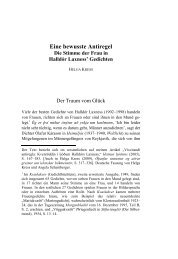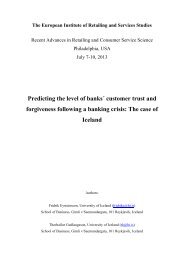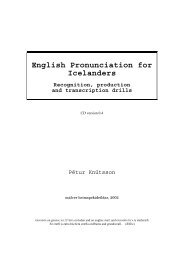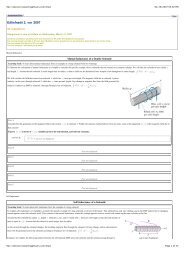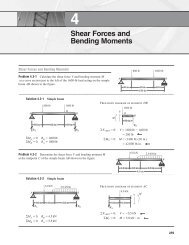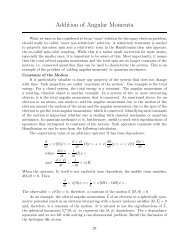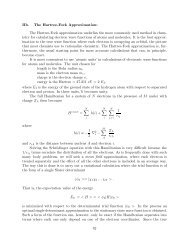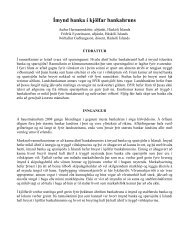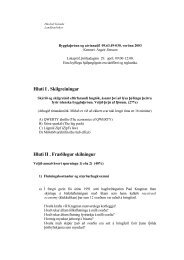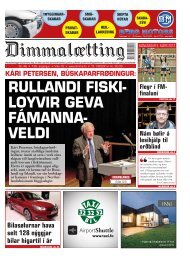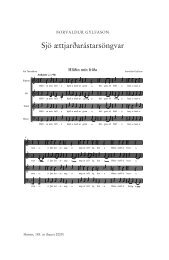Eðlisfræði 2, vor 2007
Eðlisfræði 2, vor 2007
Eðlisfræði 2, vor 2007
You also want an ePaper? Increase the reach of your titles
YUMPU automatically turns print PDFs into web optimized ePapers that Google loves.
http://session.masteringphysics.com/myct<br />
04/19/<strong>2007</strong> 05:02 PM<br />
Initially, the switch is open, and the capacitor has a charge . The switch is then closed, and the changes in the system are observed. It turns out that the equation describing the subsequent<br />
changes in charge, current, and voltage is very similar to that of simple harmonic motion, studied in mechanics. To obtain this equation, we will use the law of conservation of energy.<br />
Initially, the entire energy of the system is stored in the capacitor. When the circuit is closed, the capacitor begins to discharge through the inductor. As the charge of the capacitor decreases, so<br />
does its energy. On the other hand, as the current through the inductor increases, so does the energy stored in the inductor. Assuming no heat loss and no emission of electromagnetic waves,<br />
energy is conserved, and at any point in time, the sum of the energy stored in the capacitor and the energy stored in the inductor is a constant :<br />
,<br />
where is the charge on the capacitor and is the current through the inductor ( and are functions of time, of course). For this problem, take clockwise current to be positive.<br />
Part A<br />
Using the expression for the total energy of this system, it is possible to show that after the switch is closed,<br />
,<br />
where is a constant. Find the value of the constant .<br />
Part A.1<br />
The derivative of the total energy<br />
Part not displayed<br />
Hint A.2<br />
The current in a series circuit<br />
Hint not displayed<br />
Hint A.3<br />
Charge and current<br />
Hint not displayed<br />
Express your answer in terms of and .<br />
ANSWER: =<br />
This expression can also be obtained by substituting<br />
into the equation obtained from Kirchhoff's loop rule. It is always good to solve a problem in more than one way!<br />
Part B<br />
From mechanics, you may recall that when the acceleration of an object is proportional to its coordinate,<br />
,<br />
such motion is called simple harmonic motion, and the coordinate depends on time as , where , the argument of the harmonic function at , is called the phase<br />
constant.<br />
Find a similar expression for the charge on the capacitor in this circuit. Do not forget to determine the correct value of based on the initial conditions described in the problem.<br />
Hint B.1<br />
The phase constant<br />
Hint not displayed<br />
Part B.2<br />
Find the period of the oscillations<br />
Part not displayed<br />
Express your answer in terms of , , and . Use the cosine function in your answer.<br />
ANSWER:<br />
=<br />
Part C<br />
What is the current<br />
in the circuit at time after the switch is closed?<br />
Hint C.1<br />
Current as a derivative of the charge<br />
Hint not displayed<br />
Express your answer in terms of , , , and other variables given in the introduction.<br />
ANSWER:<br />
=<br />
http://session.masteringphysics.com/myct<br />
Page 12 of 15



